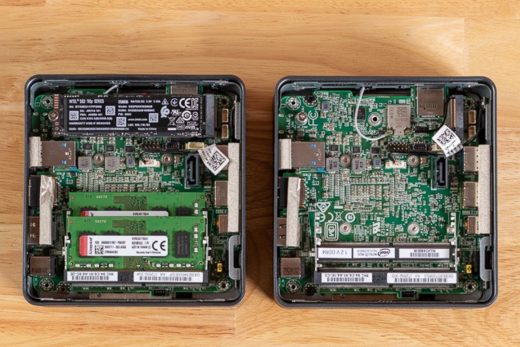The best mini desktop PCs
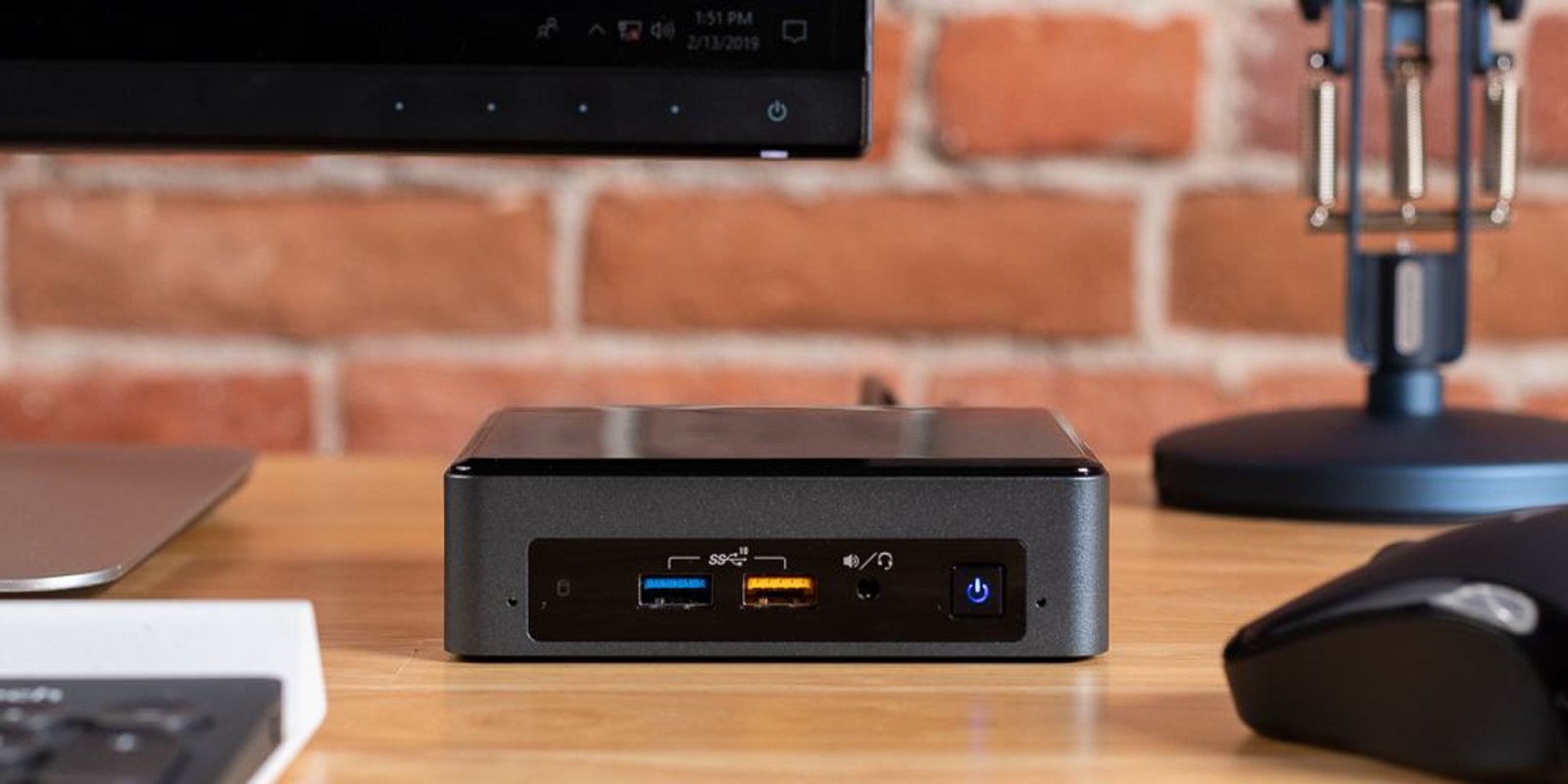
By Thorin Klosowski
This post was done in partnership with Wirecutter. When readers choose to buy Wirecutter’s independently chosen editorial picks, Wirecutter and Engadget may earn affiliate commission. Read the full mini desktop PCs guide here.
If you’re shopping for a desktop computer rather than a laptop because you prefer to work at a monitor, keyboard, and mouse, consider a mini PC. They’re powerful enough for most people and take up much less space than a full-sized desktop computer. The Intel NUC8i5BEKPA1 is the best because it strikes a balance of cost, processing power, and compact design.
Intel offers a few different NUC configurations, many of which don’t come with memory, storage, or an OS. But for people who want a prebuilt PC with Windows 10 already installed, we recommend the model with a quad-core Intel Core i5-8259U processor, 8 GB of RAM, and a 256 GB solid-state drive. Every NUC has four USB ports, a Thunderbolt 3 port, a microSD port, and an HDMI port. That amounts to the same power you’d get from something like an ultrabook or a comparable business laptop for about half the price (though you do need to provide a monitor, keyboard, and mouse). A NUC is less powerful and upgradable than a full-sized desktop PC, but it takes up a tiny fraction of the space; that size is why you buy a NUC. You can easily upgrade the storage and memory through a removable panel, and while the NUC’s fans are loud, we never found them distracting. If you’re comfortable installing your own memory, storage, and OS, you can save a decent chunk of money with the barebones version of this NUC, which we talk about below.
If you only need a computer for browsing the web and basic productivity work, the Asus Chromebox 3 is a good value. Thanks to Google’s Chrome OS, the Asus Chromebox 3-N017U is faster than a $250 Windows PC at browsing the web, basic word processing, and watching movies. Unlike a Windows or Mac computer, a Chrome OS device can’t use desktop apps. In fact, the app you’ll use for almost everything is the Chrome web browser, and you’ll have to be connected to the internet for most tasks. Though the Chromebox does support Android apps, we found those clunky and unpleasant to use with a mouse.
If you prefer using macOS, get the Apple Mac mini (2018). The base model, which we recommend for most people, has a quad-core Intel Core i3-8100 processor, 8 GB of memory, and a 128 GB SSD. The Mac mini is larger and more expensive than the NUC and has less storage for the money. But it runs silently, and the desktop-class i3 processor is about as fast as the NUC’s mobile i5 CPU. (You can customize the Mac mini with faster six-core processors and more memory and storage, but it’s expensive.) The Mac mini has four Thunderbolt 3 ports, more than any mini PC we tested, as well as HDMI, two USB 3.0 ports, Ethernet, and a headphone jack. Unlike many of its Windows counterparts, the Mac Mini doesn’t have any unnecessary preinstalled software, and macOS comes with useful software for editing documents, spreadsheets, video, photos, and audio, making it easier than Windows to set up and start using immediately.
If you prefer to have more control over the parts in a PC, or if you don’t need a Windows license, you can save money buying a barebones mini PC and providing your own storage, memory, and operating system. The Intel NUC8i5BEK is identical to the NUC8i5BEKPA, but since it doesn’t have storage, memory, or Windows installed, it costs about half the price. Even after buying memory, twice the amount of storage, and Windows 10, the barebones NUC is cheaper than the prebuilt option.
Why you should trust us
I worked at Lifehacker for over six years, where I wrote tons of how-to guides for macOS, Windows, and Linux. I’ve also tested, tweaked, and broken a variety of computers of all shapes and sizes, and I’ve been building PCs on and off since the ’90s. Here at Wirecutter, I’ve spent dozens of hours researching and testing computers and accessories. And I’m fascinated by the idea of cramming computers into small spaces, onto cheap boards, or into bizarre handheld devices.
Who this is for
Most people who want a desktop PC rather than a laptop and don’t plan to do a lot of gaming should consider a mini PC, rather than a full-sized desktop computer or all-in-one. A mini PC has all the power most people need for basic Web browsing, photo editing, and work-related tasks like spreadsheet wrangling or text editing—basically anything that doesn’t require a powerful graphics card.
A mini PC attached to a monitor is a cheaper, more upgradable alternative to overpriced all-in-one computers and takes up much less space than a desktop, while still giving you the comfortable, more ergonomic experience of a big screen, full-sized keyboard, and mouse.
Mini PCs are rarely super powerful, but you can expect at least as much performance as you’d get from a Windows ultrabook.
The size of a mini PC prevents much expansion, but you can upgrade the storage and the memory on most models and sometimes the CPU. You’ll usually be stuck with integrated graphics, so don’t expect enough power to play many modern games. The mini PCs we recommend in this guide couldn’t handle gaming beyond simple titles such as Minecraft or Hearthstone. You can add an external graphics dock if a mini PC has Thunderbolt 3, but those tend to be large and expensive and defeat the purpose of buying a smaller PC in the first place.
Mini PCs are available for less than $250, but we found the the majority of Windows PCs in this price range to be unusably slow. Instead, we prefered Chromeboxes, which run Chrome OS, an operating system that uses the Chrome Web browser as its primary interface. If you spend your computing time in a browser—checking email, using Google’s productivity suite, watching Netflix, or reading social media—Chrome OS is all you need. But a Chromebox isn’t for everyone. Chrome has very limited options for photo, video, and audio–editing software and programming text editors. Popular programs like Office 365 and Adobe Lightroom do have Web-based or Android versions, but if you need specialized software for work or school, you’re better off with Windows or macOS.
If you’re willing to install a few parts, you should consider a barebones mini PC. They come with a CPU, motherboard, Wi-Fi, Bluetooth, and USB ports. It’s up to you to provide the storage, RAM, and operating system. Most companies overcharge for RAM and SSD upgrades, so buying those pieces yourself can save money, and these systems work as well as any mini PC you can buy off the shelf.
We did not look at cheap, single-board computers, such as those from Raspberry Pi or CHIP, nor would we include them in our definition of the term “mini PC.” Those types of computers are more geared toward hobbyists and aren’t as useful for as many people because they’re slow and use custom Linux software.
How we picked
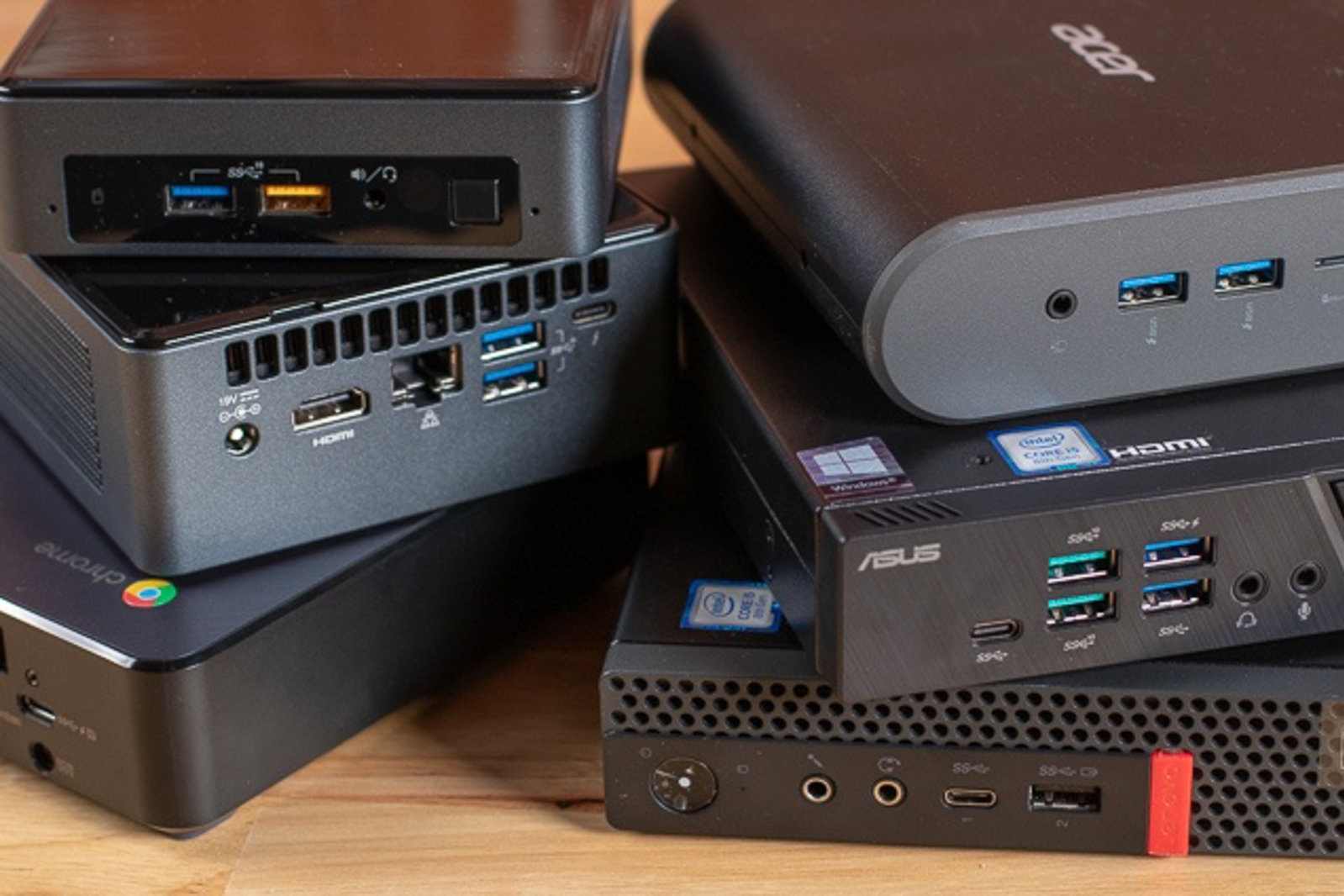
We started by researching more than 100 different models of mini PCs, noting features and trends among a variety of both well-known and obscure brands.
- Price and value: Mini PCs are smaller than desktop PCs, but their size doesn’t make them cheaper—on the contrary, cramming everything into a small box is an engineering task you’ll pay a small premium for. Expect to pay between $600 and $800 for a mini PC capable enough to last you the next few years.
- Processor: A mini PC needs a processor powerful enough to handle basic Web browsing, light photo editing, and any office programs you use. With the exception of our budget contenders, all the PCs in our test group have a eighth-generation Intel Core i3 or Core i5 processor.
- Memory: We recommend at least 8 GB of RAM for browsing the Web and handling basic productivity tasks. You can upgrade the RAM if you decide you need more. We were lenient on this component for budget models, which usually cap out at 4 GB of RAM, but you can often upgrade that to 8 GB or even 16 GB for $100 or less. Any less and a computer feels far too sluggish for even basic tasks.
- Storage: A spinning hard drive can bog down an otherwise speedy computer, so a solid-state drive is requirement here. At least a 128 or (preferably) a 256 GB SSD should be available as a standard feature or as an upgrade. Budget picks can (and usually do) come with less, but you should still be able to add more storage later if you need it.
- Wireless features: Every mini PC should come with both 802.11ac wireless networking and Bluetooth so you don’t have to waste USB ports by adding dongles for your wireless keyboards and mice or for Wi-Fi.
- Preinstalled operating system: For our main pick, we decided we wanted Windows 10 installed, but we have a DIY option for people who use Linux or already have a copy of Windows (or don’t mind spending around $100 on one). Our Mac pick comes with macOS.
- Size: There’s no specific size requirement for mini PCs, so we came up with our own. After we looked at general size trends, we decided a mini PC should be under 8 inches by 8 inches and no more than 3 inches in height. (Any larger, and you might as well get a mini-ITX computer, which has more room for expansion.) Because mini PCs fit almost anywhere, many clever mounting options are available. If a model has a VESA mount, you can hide the mini PC behind a monitor or underneath a desk.
- Ports: A good mini PC comes with at least four USB ports. A great mini PC tosses in a USB Type-C and/or Thunderbolt port and an SD card reader. The ports should be split between the PC’s front and the back so you can access at least a couple of them without messing around at the back of the computer. A mini PC should have at least one DisplayPort 1.4 port or an HDMI 2.0 port, but it’s better to have two DisplayPort connections or one DisplayPort and one HDMI port for dual displays.
- Ease of upgrades: You should be able to upgrade the memory and storage on any mini PC without much technical know-how.
- Warranty: Most mini PCs come with at least a one-year warranty, but the best come with a two- or three-year warranty. The policy should cover any defects as well as tech support over the phone, chat, or email.
We considered the following features, but they didn’t change our recommendations.
- Lack of bloatware: Nobody wants bloatware preinstalled on their PC, and it’s annoying for people who can’t figure out how to remove it. A mini PC free of manufacturer cruft is more desirable.
- Low heat and noise: Like laptops, mini PCs cram a lot of power into a small case. While you won’t need to worry about burning your legs with a mini PC, you do need to make sure the case regulates temperature so it doesn’t overheat. Due to the system’s size, you might hear the fan kick on more often than with other computers, so it’s important the fan’s sound isn’t too annoying.
- Power consumption: None of these mini PCs are power hungry since they all use low-power desktop and laptop processors, so a mini PC shouldn’t draw much power even when it’s working hard.
After we settled on the hardware criteria, we searched the websites of major PC manufacturers such as Acer, Apple, Asus, Dell, HP, Intel, and Lenovo, and then we poked around in the inventory of smaller manufacturers like Gigabyte, MSI, Shuttle, and Zotac to find models to test.
How we tested
We started our tests by booting up each mini PC and then running Windows Update and each manufacturer’s driver-update program (if included). We then ran the benchmarking program PCMark on each model to get a baseline for how it would perform in general use. We listened to the fan’s volume during these tests and used an IR thermometer to record the surface temperature of each mini PC’s case throughout the process. No mini PC in this round of testing had any issues with overheating in our tests. We tracked the power consumption of each mini PC with a Kill A Watt EZ while it was idle on the Windows desktop, and while it ran the CPU- and GPU-intensive benchmarks.
We then connected each mini PC to a 4K monitor and used it for at least three days of ordinary work. This process usually consisted of running a browser with at least 15 tabs open at a time (Google Docs, Sheets, Gmail, Slack, and plenty more), and streaming music through the Spotify desktop application. This testing allowed us to get a feel for how each mini PC performed on a daily basis and gave us time to discover any quirks related to bloatware or driver issues. On each machine we tried to load up a few games. On every PC in this guide, games like Hearthstone, Rocket League, Minecraft, and League of Legends were playable at reasonable settings, but more demanding games like Far Cry 5 or Middle-earth: Shadow of Warran poorly, even on lower settings.
Our pick: Intel NUC8i5BEKPA1
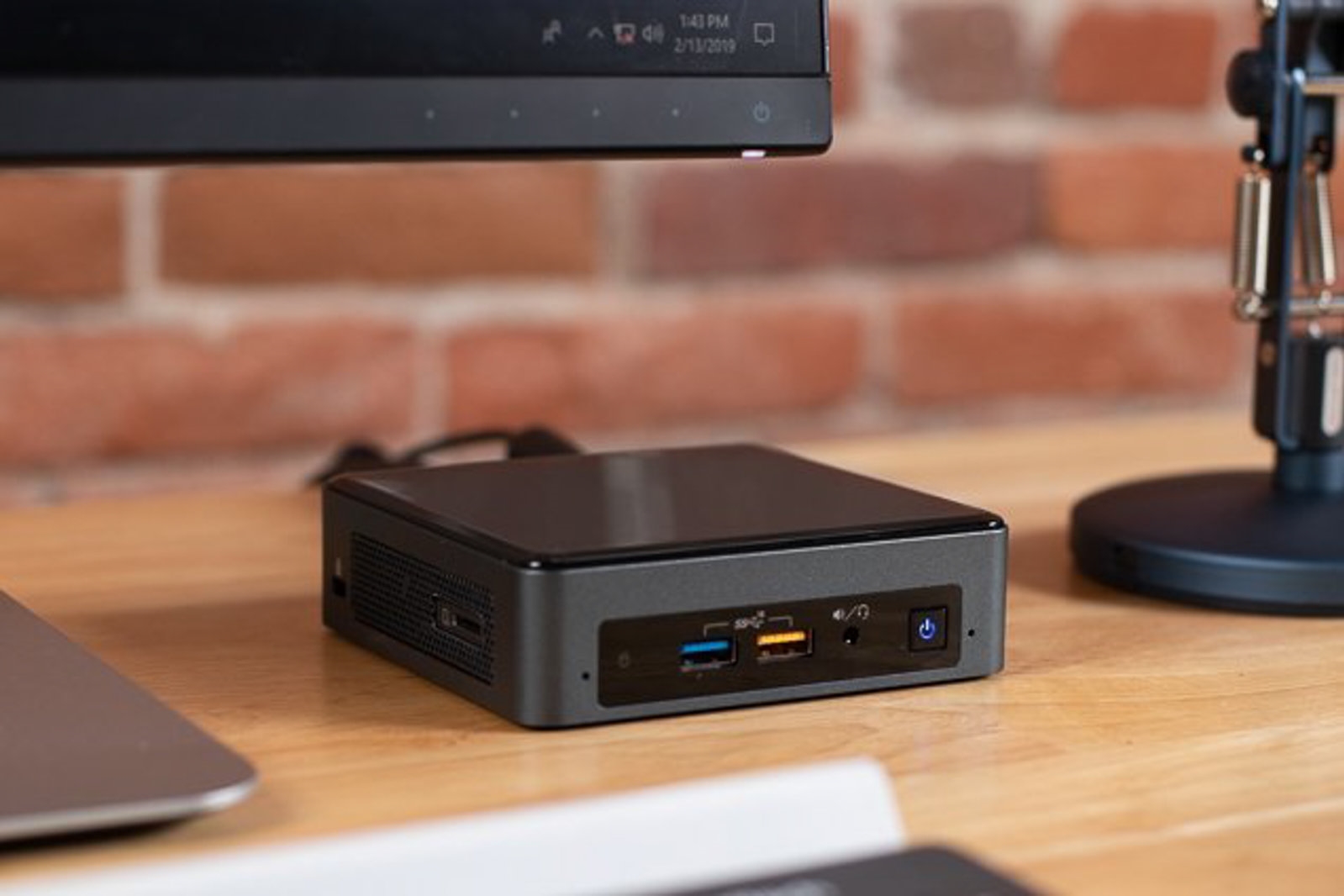
The Intel NUC8i5BEKPA1 is the best mini PC for most people. Aside from much-slower, lower-cost options, it’s the least expensive mini PC we tested, has a powerful-enough processor, plenty of memory and storage, and is the smallest mini PC we found. It has plenty of ports and is the only Windows mini PC we found with a Thunderbolt 3 port. It’s easy to upgrade, has an excellent three-year warranty, and doesn’t come with annoying bloatware. It is the loudest mini PC we tested, though, and while the fan noise didn’t bother us, you’ll notice it if you’re in a silent room.
The NUC configuration we recommend has a laptop-class quad-core Intel Core i5-8259U processor, an Intel 256 GB M.2 PCIe NVMe SSD, 8 GB of memory, Intel Iris Plus 655 graphics, as well as 802.11ac Wi-Fi and Bluetooth 5.0. The speedy local storage and included wireless is better than you get with other mini PC options like the Lenovo M720q. The NUC has either more storage or a more powerful processor than most mini PCs in this price range, including the more expensive Mac mini, which comes with a measly 128 GB of storage.
In our week of using the NUC, it was great for basic productivity tasks, web browsing with multiple tabs open, and watching videos. We did light photo editing in GIMP without issues, and scrolling through massive spreadsheets in Excel was always smooth. The NUC’s Iris Plus Graphics 655 integrated graphics are better than most other mini PCs but still struggled running modern games, even with the settings at low and 1080p. You’ll get by in Fortnite or Overwatch if you don’t mind dropping the graphics settings to low, and older games like Bioshock Infinite will work on high settings. But this machine isn’t meant for PC gaming.
This NUC comes with Windows 10 Home installed, but if you need Windows 10 Pro you’ll need to upgrade it yourself (most people won’t need to do this). If you already own a copy of Windows and don’t mind installing memory and storage yourself, get the barebones version to save yourself some money.
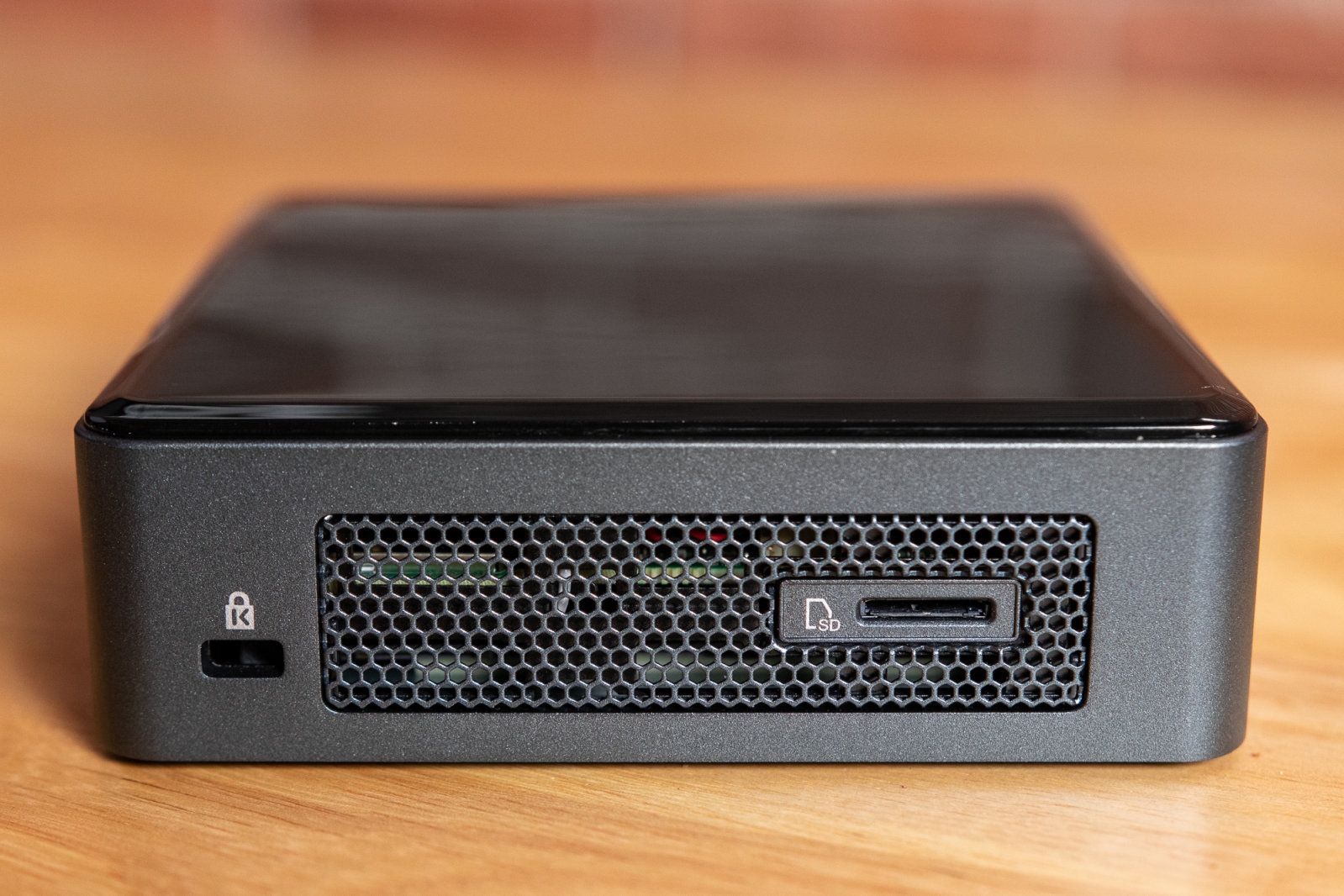
At 4 inches wide by 4 inches long by 1.25 inches tall, the NUC is the smallest mini PC we tested. It’s just a quarter the volume of a Mac mini, though the NUC does require an external power brick that you’ll need to find room for. Even though the NUC is significantly more powerful than the Chromebox, it’s almost two inches smaller in length and width. Because of its small size, the NUC can fit just about anywhere, including mounted on the back of a monitor or on the underside of a desk (as long as you’re not blocking the fan vents). Like most mini PCs aside from the Mac mini, Intel includes a VESA mount and screws with the NUC. The NUC is often used as a living room PC for this reason, as it’s about the same size as an Apple TV.
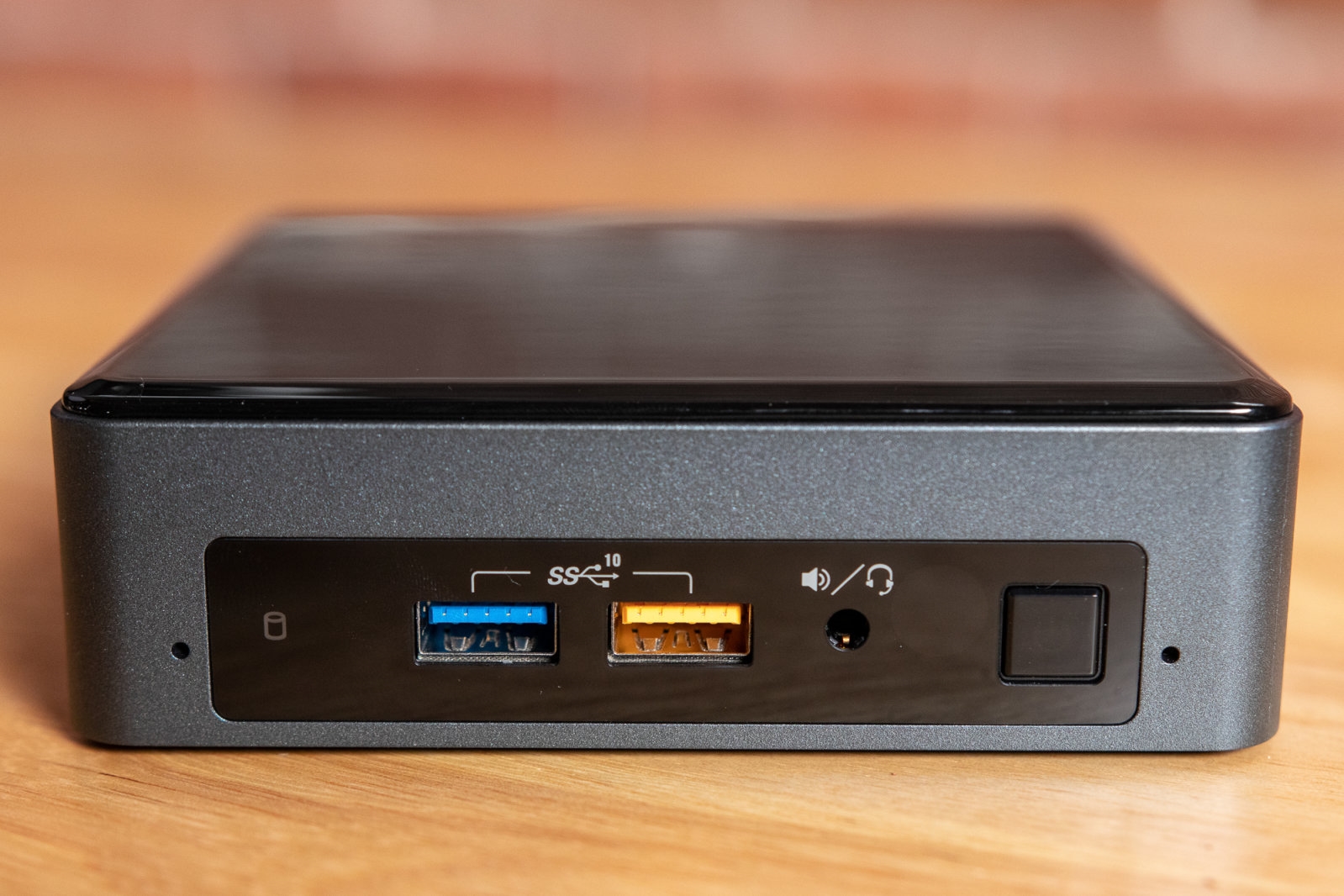
The NUC has four USB 3.0 type-A ports, two in the front and two in the back. The yellow front port is a charging port; it can provide power even when the NUC is off. On the front you also get a headphone jack. On the back, you get an HDMI 2.0a port, gigabit Ethernet port, and Thunderbolt 3 port, and on the side is a microSD slot. The NUC is the only Windows mini PC we tested with either Thunderbolt 3 or a microSD card slot, but other options, like the Lenovo M720q and Asus PB60, have a couple more USB type-A ports. The NUC is also the only mini PC we tested with an integrated microphone. It’s not clear enough for extended voice calls or professional meetings, but it’s fine for using Cortana or Alexa; it’s about as good as the one on a cheap laptop.
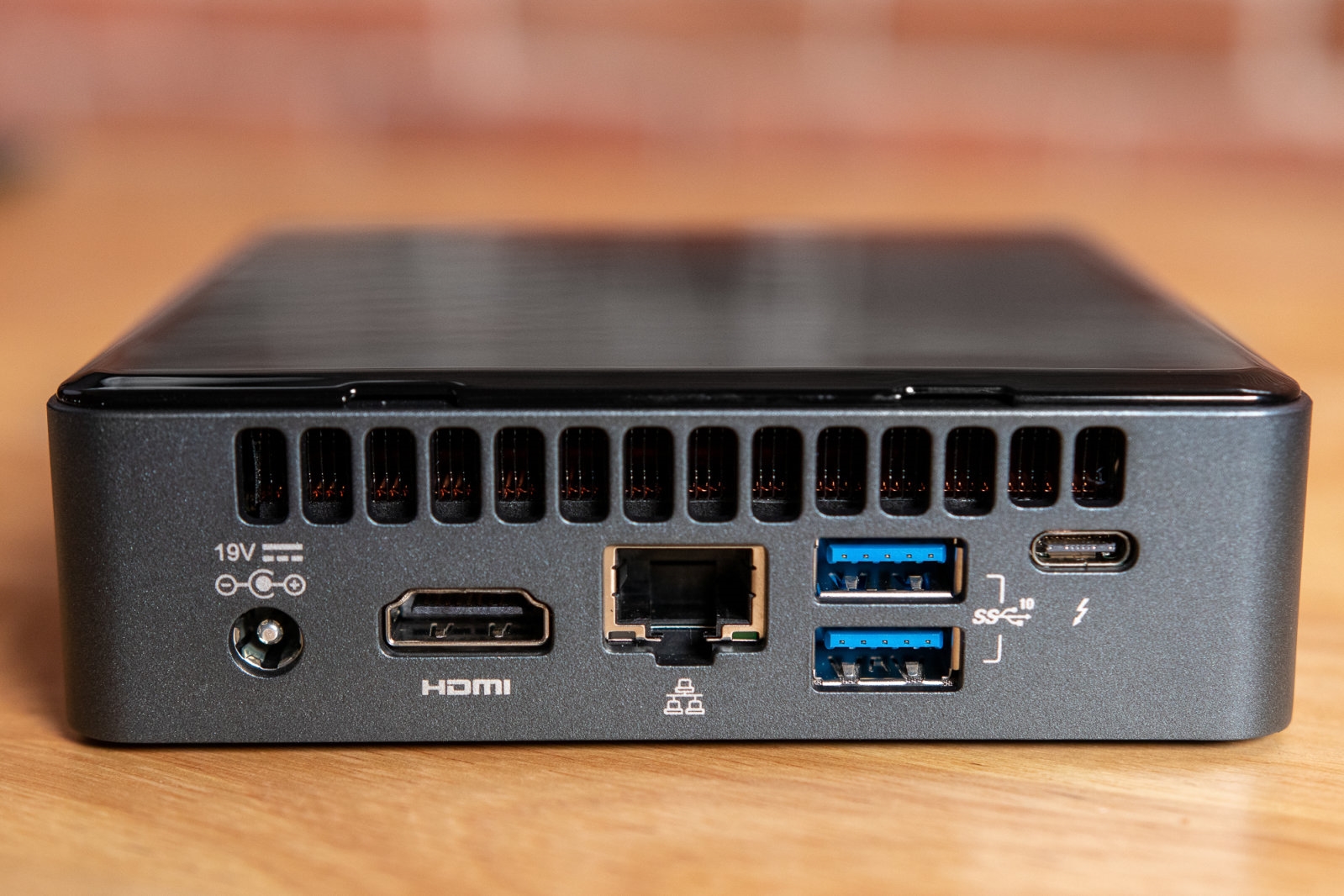
To upgrade the NUC, you need to remove four Philips screws on the bottom. Once they’re off, you have access to the M.2 storage slot and memory. This is significantly easier than the Mac mini, where you can’t upgrade storage at all and you’ll need to take the computer most of the way apart to upgrade the memory, but similar to other Windows and Chrome OS–based mini PCs, including the Lenovo 720q and Asus PB60.
Intel offers a three-year warranty for the NUC, much longer than any other mini PC we tested, including those made by Apple, Asus, and Lenovo, which typically offer a one-year warranty.
Unlike companies like Asus, Lenovo, and HP, Intel doesn’t cram any bloatware on the NUC aside from its driver update software. It’s as close to a vanilla Windows 10 installation as you’ll get without building it yourself.
Like every mini PC we tested with eighth-generation processors, we didn’t notice any worrisome changes in surface temperatures or internal heat issues on the NUC. The NUC’s fans are loud, though, a detail we explain below. The NUC’s more powerful integrated GPU does mean it sucks up a little more power than other Windows mini PCs we tested. At idle, it was the lowest of any mini PC we tested at 7.8 watts. During benchmarking the NUC maxed out at 55 watts, much more than the Lenovo 720q and Asus PB60, which maxed out at 32 watts, but lower than the Mac mini, which regularly hit 94 watts. 55 watts is still a lower energy use than most full-sized desktop PCs.
Flaws but not dealbreakers
The NUC is a loud little computer. From about two to three feet away, you will often hear the fan spin up when you do anything more complicated than open up a few browser tabs. You can enable a quiet mode in the system BIOS to help with fan noise, but it doesn’t eliminate the sound altogether. Using the VESA mount to tuck it behind a monitor or underneath a desk will also help block some sound, but there’s no denying it’s louder than other, bigger mini PCs like the 720q, PB60, and Mac mini. In our tests, when the fans are spinning at maximum, it’s a similar volume to a Sony PS4 at idle. It wasn’t enough to bother us, nor is it loud enough to drown out music or videos, but you may find it annoying if you’re in a very quiet environment.
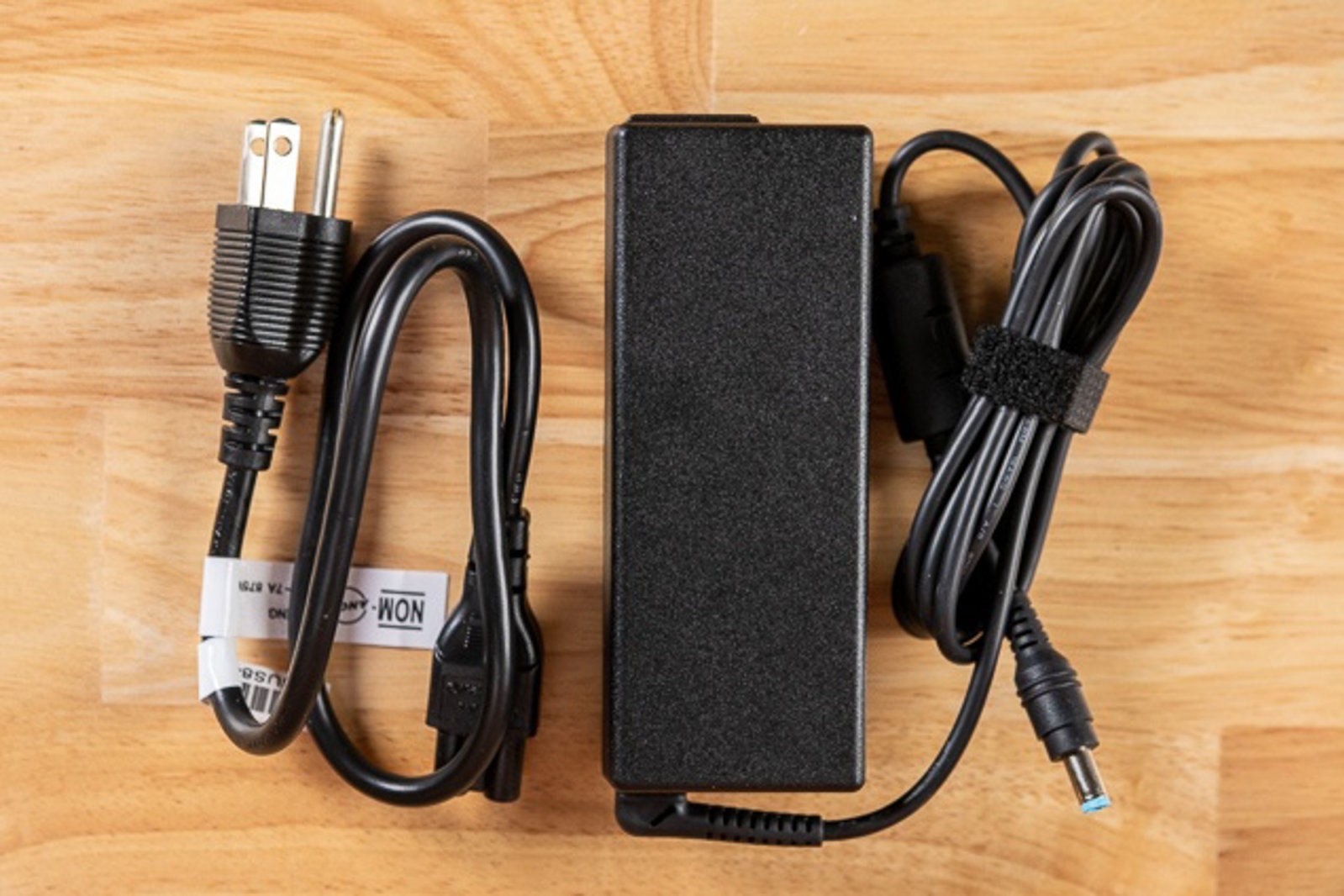
The NUC has a small external power supply about the size of a toothpaste box. This is the case with pretty much every mini PC except the Mac mini, because their small size doesn’t leave room for an internal power supply, but it’s too bad the designer didn’t find a way to shrink the brick.
Budget pick: Asus Chromebox 3-N017U
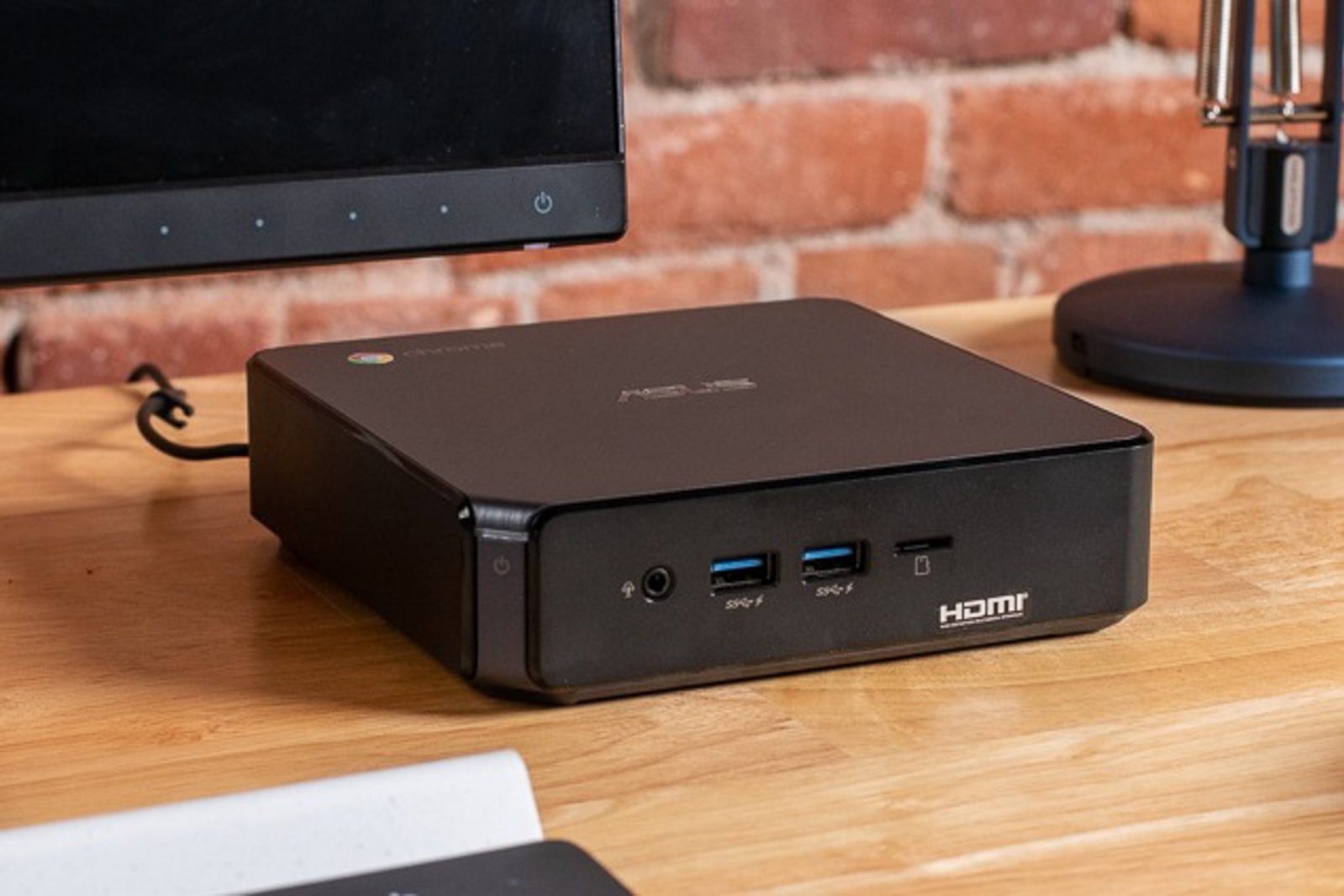
If you don’t want to spend more than $250 on a mini PC, Windows computers aren’t the best option. Instead, we suggest getting the Asus Chromebox 3-N017U. The Chromebox 3 usually costs about a third of the price of an Intel NUC, and the cheaper, slower components still run Chrome OS well. The Chromebox doesn’t have the software bloat of most Windows computers, and it’s much quieter than its more powerful counterparts. But Chrome OS can’t run Windows apps, and it doesn’t come with enough storage to store many files locally.
The Chromebox 3-N017U is the cheapest configuration of Asus’s Chromeboxes, and comes with an Intel Celeron 3865U, 4 GB of memory, and a 32 GB SSD, as well as 802.11ac Wi-Fi and Bluetooth 4.2. A processor this slow can’t run Windows 10 well, but it does fine with Chrome OS. The Chromebox 3 performed well enough for us over several days of work, with a dozen tabs open running sites like Google Docs, Google Sheets, Spotify, and YouTube, as well as several browser extensions. It never felt horribly sluggish or unusable, but if you do think you need more memory, the Chromebox has a open RAM slot and it’s easy to upgrade. The Chromebox does support Android apps, but they’re awkward to use on a desktop computer with a mouse. Android apps also can’t bridge the gap for anyone who needs full-fledged applications like Photoshop or Premiere in Windows or macOS. If you need a specific application outside of a web browser, the Chromebox isn’t for you. Chromeboxes update themselves automatically, and they don’t take nearly as long to do so as Windows or macOS computers.
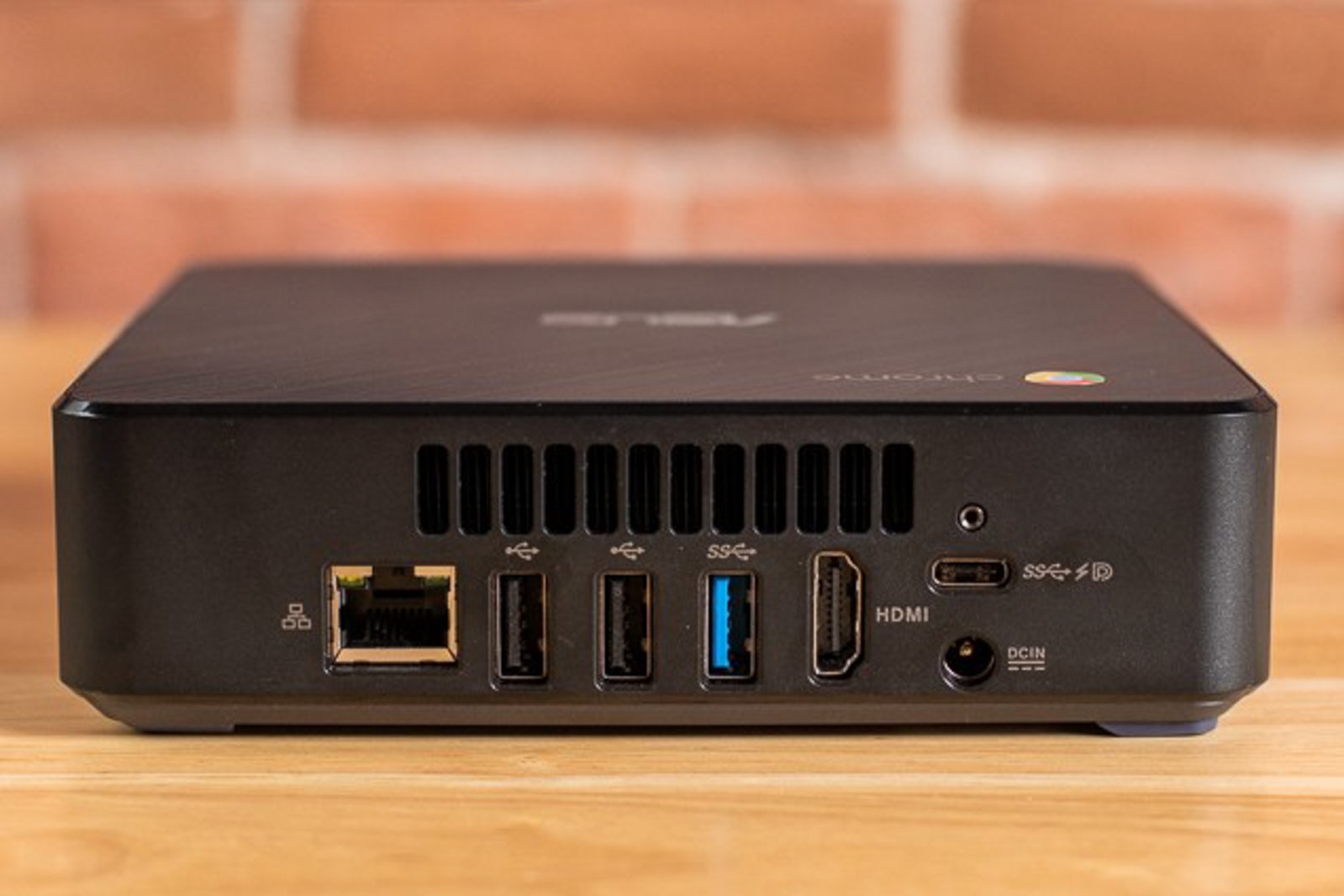
Chrome OS assumes you store most data online, so the Chromebox 3 has only 32 GB of internal storage on an M.2 SATA SSD. This doesn’t sound like much, but since the Chromebox can’t handle complex tasks like editing video or photos, the amount of storage ends up being fine for what the little computer can do. The Chromebox has a microSD card slot if you want to add temporary storage, and Google does offer 100 GB of free online storage for two years if you log in from your Chromebox.
The Asus Chromebox 3 measures 5.85 inches wide, 5.85 inches long, and 1.57 inches tall, making it larger than the NUC but smaller than the Mac mini. It’s still plenty small enough to fit on the backside of a monitor with the included VESA bracket.
The Chromebox 3 has plenty of ports, including two USB 3.0 type-A ports in the front and one in the back alongside two more USB 2.0 ports. It also has a microSD card slot, HDMI, and a USB-C port with support for DisplayPort and power over USB-C. This means you can hook it up to a monitor that supports USB-C with a single cable.
We don’t think most people should buy a Chromebox with the expectation of upgrading it, but it’s easy enough to do on the Chromebox 3. You need to peel the rubber feet off, but otherwise it’s four Philips screws between you and the two memory slots and the M.2 storage. Though be aware, the Chromebox 3 uses a 42 mm length M.2 like this as opposed to the NUC’s 80 mm slot. We think the microSD slot will be good enough storage expansion for most people.
The Asus one-year warranty is much shorter than Intel’s 3-year warranty, but it’s the same coverage you get from other Chromeboxes from HP or Acer.
The Asus Chromebox is so quiet we had to double-check that it even has a fan (it does). The power consumption was the lowest of any mini PC we tested. At idle it averaged 9 watts, similar to the NUC. With 17 tabs open all playing an unbearable cacophony of YouTube videos, the maximum power draw was 14 watts, much lower than the NUC’s 55 watts.
Also great: Apple Mac mini (2018)
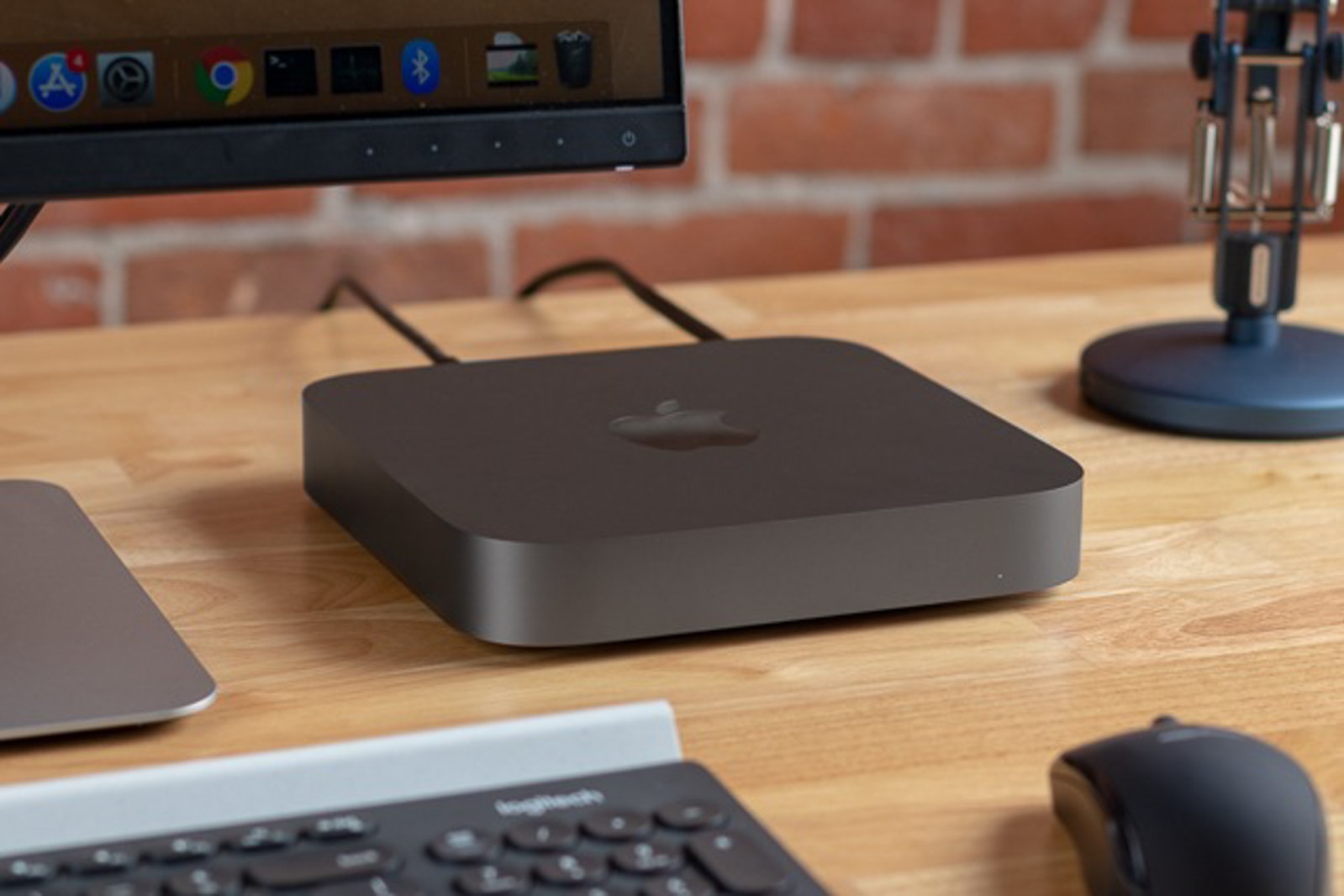
If you prefer macOS to Windows or Chrome OS, the 2018 Mac mini is the only option, but it’s at least a good one. We think the base model, with a eighth-generation Intel Core i3 CPU, 128 GB SSD, and 8 GB of memory is plenty for most people. But upgrades are expensive through Apple, and while you can add memory yourself, it’s a cumbersome process.
The base Mac mini model has an Intel Core i3-8100 processor, 128 GB SSD, 8 GB memory, and Intel UHD Graphics 630, as well as 802.11ac Wi-Fi and Bluetooth 5.0. The Mac mini’s processor is a desktop CPU, which means it’ll provide a little more oomph than the mobile chip in the NUC, but both ultimately offer similar performance in basic tasks. But the Mac mini’s soldered-on 128 GB SSD is pathetically small compared with the 256 GB SSD included with the NUC, it’s not upgradable, and Apple charges a hefty $200 to step up to 256 GB. If you need more power, we suggest buying the six-core eighth-generation i5 model that already includes 256 GB of storage and starts at $1,100.
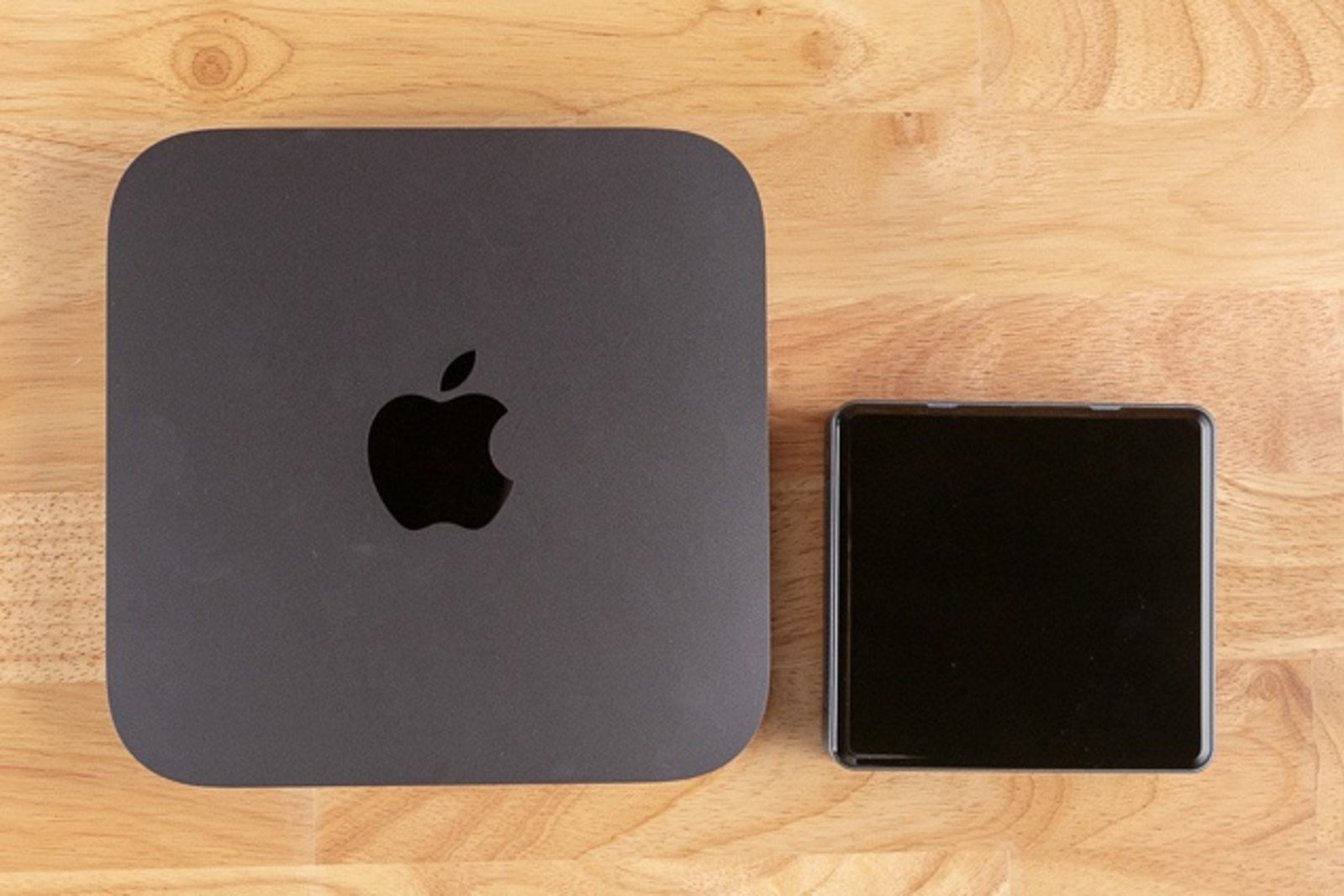
The Mac mini handles basic tasks like working in spreadsheets, having dozens of tabs open in Chrome, and light photo editing. Using it for a week, it felt more capable than my 2017 MacBook Pro for basic computing, and it never slowed down with 10 applications open running multiple tasks. The Mac mini lacks a discrete GPU, so it’s not useful for playing games, and content creators will want to consider an external GPU for complex video editing and rendering. Depending on the software you use, the base model of Mac mini might squeak by as a decent music production tool.
The Mac mini is almost twice the size of an Intel NUC at 7.7 inches wide by 7.7 inches long by 1.4 inches high. The Mac mini also lacks VESA mounting options, so it’ll need room on a desk unless you want to try out a third-party mounting solution. Unlike the NUC, the Mac mini doesn’t have a external power brick, so it’s easier to set up discreetly.
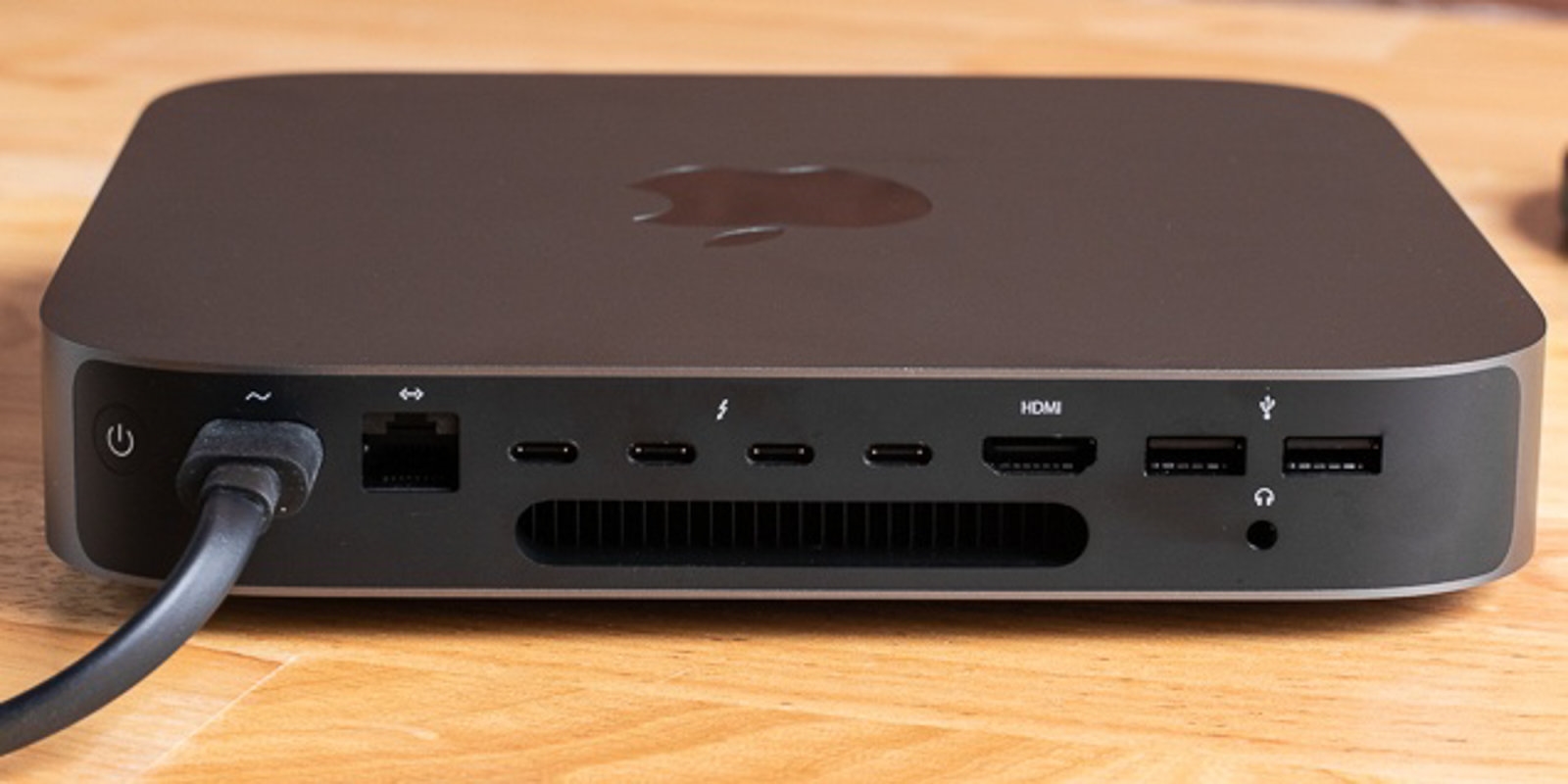
When it comes to ports, the Mac mini is the most forward-thinking mini PC we tested. It has four Thunderbolt 3 ports, Ethernet, HDMI 2.0, two USB 3.1 type-A ports, and a 3.5 mm headphone jack. The Thunderbolt 3 ports are especially useful. For example, video editors can add an external GPU and the rest of us can add more storage using a fast portable SSD. (It won’t be as fast as Apple’s internal storage unless you spend extra on a Thunderbolt 3 drive enclosure and M.2 PCIe SSD, but our portable SSD pick will be plenty speedy for basic file storage.)
The Mac mini is not easy to upgrade. Apple solders on the SSD and you can’t upgrade it, so upgrade during the checkout process if you need more. Adding memory is a 16-step process requiring special tools. This is unfortunate, and we wish Apple made this as easy as it is on the NUC.
Apple’s one-year limited warranty is shorter than Intel’s three-year warranty, but Apple’s warranty coverage is excellent and tends to have quick turnarounds for most repairs; you can also get in-person support at Apple stores if you need it. You can add two more years of coverage with AppleCare+ for $100.
Unlike most Windows PCs, and Windows 10 itself, Apple doesn’t include any bloatware in macOS. Apple includes a lot of value with macOS and its stock apps, like Pages for word processing, Numbers for spreadsheets, Keynote for presentations, and Garageband for making music. From unboxing to using the machine, the Mac mini is quicker and arguably easier to get up and running than the NUC.
The Mac mini was one of the quietest mini PC’s we tested and we rarely noticed its fans. Especially compared to the noisy NUC, the Mac Mini’s fans rarely rev up. It does consume much more power than the NUC, though, often hitting around 94 watts when we transcoded video, and it settled at around 13 watts at idle.
Also great for DIYers: Intel NUC8i5BEH
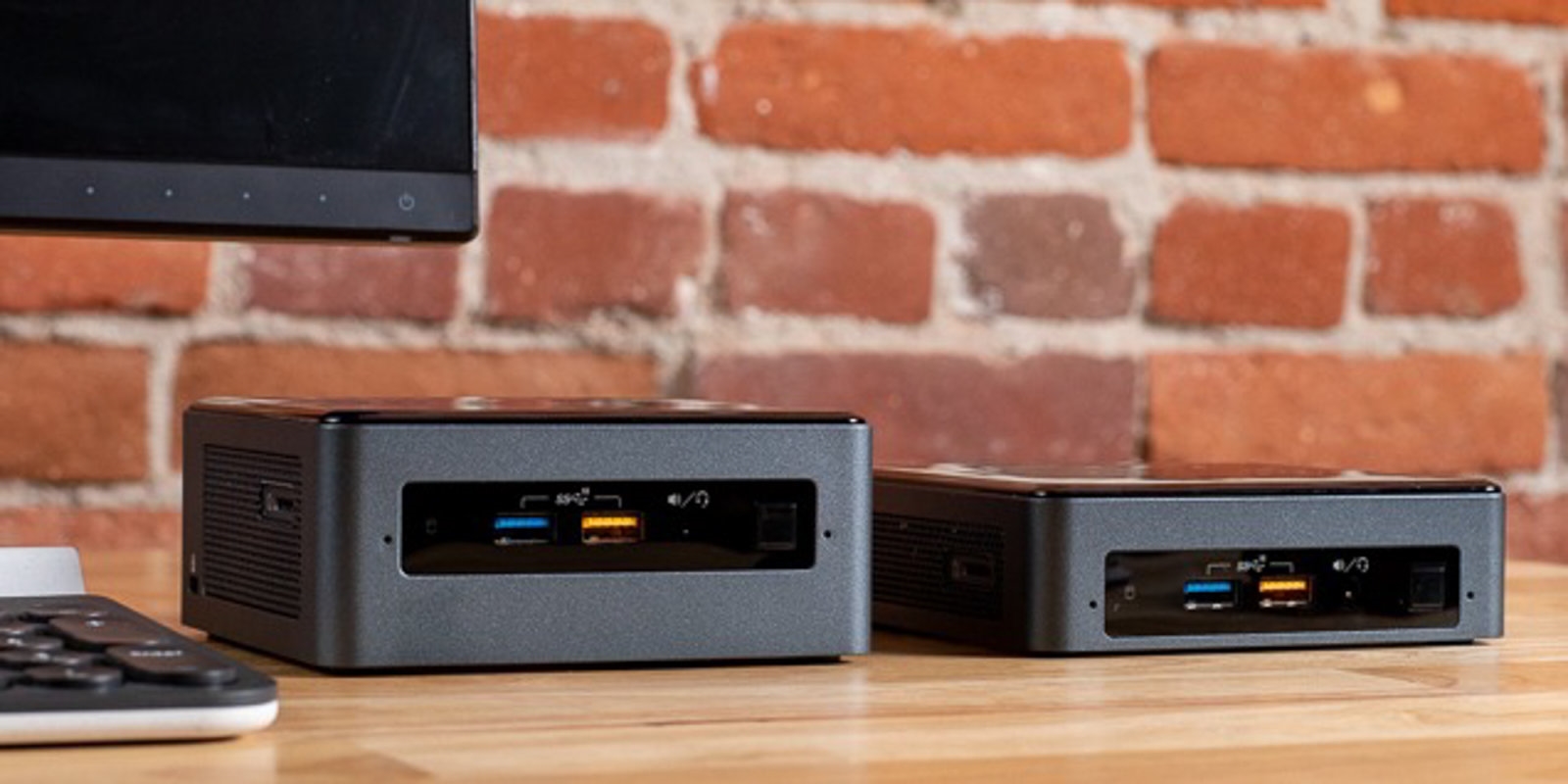
If you don’t mind installing your own storage and memory and loading Windows yourself, the Intel NUC8i5BEK (or the taller Intel NUC8i5BEH which has room for a 2.5-inch drive in addition to an M.2 drive) is identical to the preconfigured Intel NUC that’s our top pick but doesn’t include storage, memory, or an operating system. This makes the NUC cheaper and allows you to customize what components go inside.

Even if you don’t have a spare SSD or copy of Windows sitting around, building your own NUC saves you money. The NUC8i5BEK, with our favorite M.2 PCIe SSD, the Samsung 970 EVO Plus 500 GB, 8 GB of memory, and a copy of Windows 10 currently costs less than $650; using a cheaper M.2 SATA SSD like the 500 GB Crucial MX500 can save another $50 or $60. That’s cheaper than the prebuilt system and includes twice the storage. Installing the memory and storage is easy enough that a novice can do it (PDF). It took me less than five minutes to install the memory and storage, plus another hour or so to install Windows and run software updates. If you’ve never installed Windows from scratch before, this How-To Geek guide walks you through everything you need to buy it, make a USB install drive, and install it.
What about gaming mini PCs?
Gaming mini PCs promise PC gaming in a package smaller than most game consoles, but they don’t make sense for most people. Gaming mini PCs are considerably pricier than the models in this guide and are much more expensive than building a larger PC yourself. They run very hot, which can lead to a shorter lifetime for the the components. The components are slower than what you get in a cheaper midrange gaming PCl, and you can’t upgrade any of the parts that really matter for performance, like the GPU and CPU. Most people should still stick to a gaming PC in a Mini-ITX case if you’re looking for something small because it’ll have better cooling, cost less to build, and be easy to upgrade later on. If you’re more concerned with portability, a gaming laptop is a better option.
Intel’s gaming mini PC, the Hades Canyon NUC is interesting, but it’s pricey for the performance it provides and not something we recommend for most people. It’s a barebones PC, and once you add in an SSD, RAM, and Windows, you’ll end up spending around $1,300-$1,400. In exchange for the hefty price, you get pretty lackluster performance for modern games. The Hades Canyon NUC gets the job done for for lightweight games, video editing, or similar content creation; it just costs too much to make sense for most people. Check out reviews from Tom’s Guide, AnandTech, and PC Mag for a deeper dive into the Hades Canyon benchmarks.
A handful of more powerful barebones gaming mini PCs exist, but most of them come from smaller companies like Zotac, Shuttle, and ASRock. These tend to have poor reviews, often mentioning issues with overheating, drivers, and tech support. They’re also very expensive. A barebones Zotac Zbox with a last-generation Intel i5 CPU and a GTX 1070 costs $1,200. When you factor in memory, storage, and Windows, you could easily build yourself a larger but much more powerful (and upgradable) PC for less money.
The competition
We dug into the specs on over 80 mini PCs, but only a handful met our requirement of a eighth-generation Intel processor with a solid-state drive (or the option to add one) for under $800. After testing numerous Windows 10 budget systems with low-performance processors, we decided Chrome OS was the best option for less than $250.
The Asus PB60-B5042ZC was the closest in value to the NUC, but it costs more, lacks Thunderbolt 3, and doesn’t have an SD card slot, and Asus includes a lot of bloatware. The PB60 does run almost silently, though, so if the NUC is too loud and you don’t care about the other features, get the PB60.
Lenovo’s M720q is the follow-up to our previous favorite mini PC, but we’ve seen issues with stock and up to month-long wait times. It’s pricier than the NUC, lacks Thunderbolt 3, and doesn’t have an SD card slot. Lenovo also offers the M625 Tiny with an AMD processor, but at the time or writing we weren’t able to customize the M625 with anything more powerful than an AMD A9-9420E.
We weren’t able to test the HP ProDesk 400 mini, a previous runner-up in this guide, but as of this writing, a configuration with an Intel Core i5 is unavailable. The HP ProDesk 600 is significantly more expensive than the NUC.
The Acer Chromebox CXI3-4GNKM is functionally identical to the Asus but costs more. It performs the same as the Asus, so if you prefer the Acer’s rounded corners or it’s on sale, the Acer Chromebox CXI3 is as good as the Asus model. We tested the same Acer Chromebox in its Intel Core i3-7130U configuration. At just shy of $500, this is a much bigger investment, and the processor and memory upgrades aren’t useful enough for most people. If you know you need the extra power, this i3 model is the way to go, as we saw diminished returns in the more expensive i5 model.
We tested several sub-$300 Windows mini PCs with Intel Celeron processors, including the Minix Neo Z83-4 and Zotac Zbox CI325 Nano, but we feel Chrome OS offers a better overall experience for the same price.
The Zotac ZBox MI640Nano-U is comparable to the barebones Intel NUC, but costs more, has a less powerful Intel HD Graphics 620, doesn’t include Thunderbolt 3, and comes with a two-year warranty.
Gigabyte’s Brix is a popular barebones option, but it uses the same slower integrated graphics as the Zotac MI640, also lacks Thunderbolt 3, has a short one-year warranty, and costs $100 more than the NUC.
This guide may have been updated by Wirecutter. To see the current recommendation, please go here.
When readers choose to buy Wirecutter’s independently chosen editorial picks, Wirecutter and Engadget may earn affiliate commissions.
(361)

